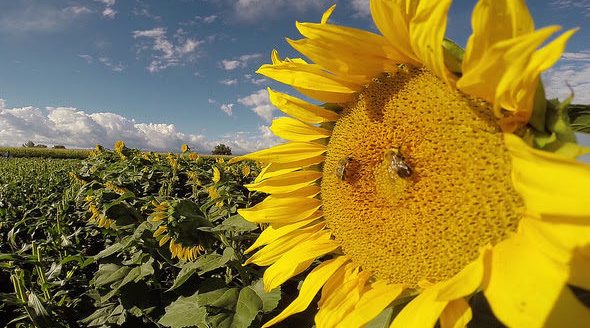The Wildlife Services Division of the Oklahoma Department of Agriculture, Food and Forestry and partners in the battle against feral swine eliminated a record-number of the destructive, invasive species in 2017.
The effort put forth on behalf of Oklahoma agricultural producers and urban residents resulted in 188 percent more feral swine eliminated during 2017 than in the previous year and 29,811 more feral swine than were eliminated in 2011. Oklahoma Secretary of Agriculture Jim Reese made the announcement recently during a press conference at the Oklahoma Department of Agriculture, Food and Forestry.
“The damage they do not only affects agriculture but personal property such as lawns and gardens and natural resources as well,” said Scott Alls of Oklahoma Wildlife Services for the U.S. Department of Agriculture’s Animal and Plant Health Inspection Service. “They provide direct competition to popular game species such as deer and turkey but also affect the environment in numerous negative manners.”
Reese said ODAFF had set a goal to eliminate 14,000 feral swine in 2017. Alls reported this month that the Wildlife Services Division of ODAFF and partners eliminated 17,002 feral swine in 2017. That is compared to 11,206 feral swine eliminated in 2016, 7,808 feral swine eliminated in 2015 and 2,426 in 2011. All feral swine efforts combined eliminated 32,237.
The breakdown of the 32,237 eliminated in 2017 was: 17,702 by Wildlife Services; 2,742 by private aerial hunting; 6,000 by sporting facilities; 5,289 by buying stations for harvesting and 604 by Conservation in traps, in just less than five months.
Feral swine are a non-native invasive species to Oklahoma that detrimentally impacts agricultural production and natural resources in Oklahoma. Because of feral swine, citizens of Oklahoma suffer damage to crops, livestock and wildlife habitat. Feral swine also pose a health risk to humans, livestock, companion animals and native wildlife. The department’s goal is to render the state of Oklahoma free of feral swine.
Managing wildlife to reduce damage to agriculture and property, minimize threats to public health and safety, and help protect natural resources including endangered species is an important goal of ODAFF’s Wildlife Services Division.
The Wildlife Services program is cooperatively funded by the ODAFF, USDA/APHIS/Wildlife Services, Oklahoma counties, other state and federal agencies, city governments and private organizations.
Professional wildlife technicians and biologists employed by the Wildlife Services program strive to develop and use integrated wildlife damage management strategies that are biologically sound and socially acceptable.
The battle of addressing the issue of feral swine is ongoing.



